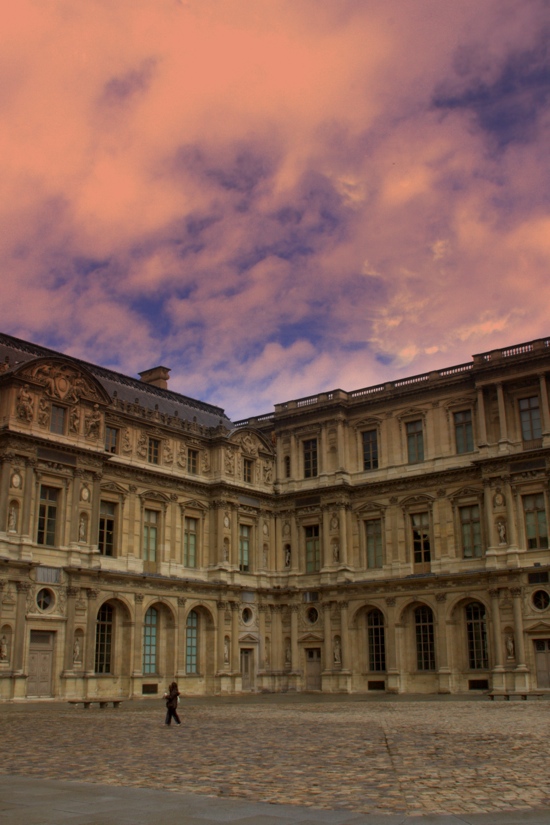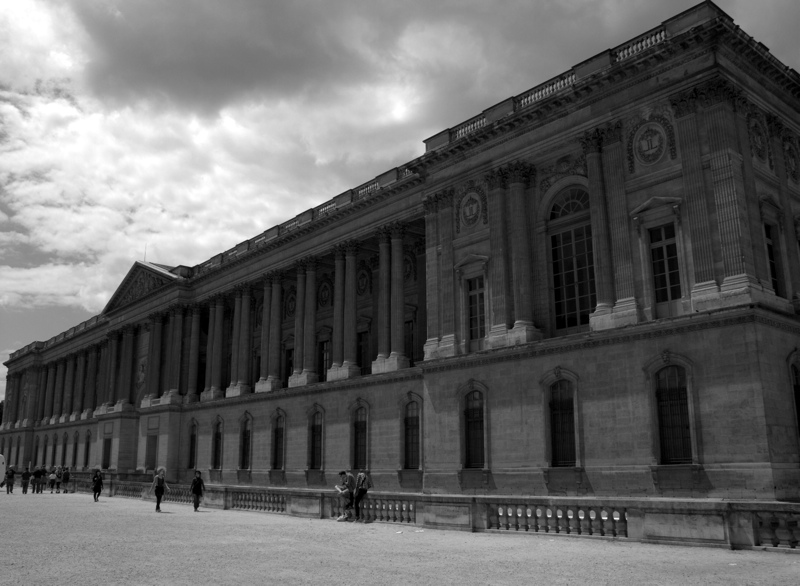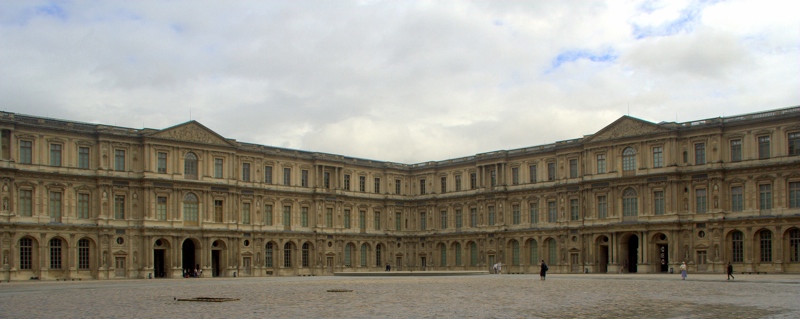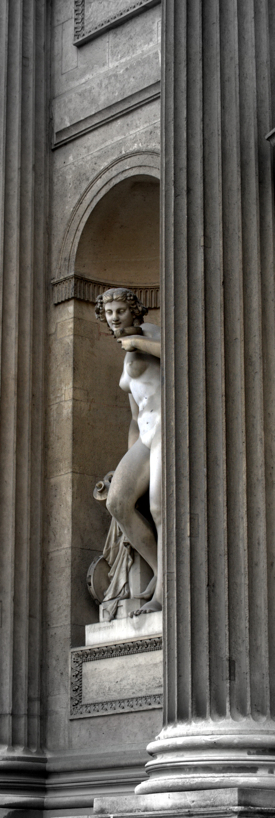France (Wikipedia)
Lister did not mention the Louvre in his pocketbook or memoirs, but his traveling companion Philip Skippon noted:
The Tuilleries is the garden belonging to the Louvre, which they would permit no strangers to see at this time.
The Louvre gallery is 900 feet long; under half the length of it are stables.
Before the Louvre gallery, not far from the Pont des Thullieries, stood an old tower call’d la Tour de Anglois, which was thrown down the last year. Some say the preceding kings durst not throw it down, because of a prophecy that France should then be conquered. The Louvre will be a vast place when it is finished, that side towards the river, and the end towards the Tuilleries is already built.
Donec totum impleat orbem. [1.'Till it fills the whole world', a tribute to the French Kings' ambitious building program.] And, Virtuti Regis invictissimi, inscribed on several parts of the Chateau de Louvre 1.
During the time Lister and Skippon visited:
In 1660 Louis Le Vau was appointed to oversee the completion of the Louvre. This entailed a new facade for the Petite Galerie, the completion of the north wing of the Cour Carrée, and, between 1661 and 1663, the extension of the south wing, including two new pavilions—one at the eastern end, symmetrical to the Renaissance Pavillon du Roi, and one in the center. In 1668, Le Vau doubled the width of the palace and constructed a new facade overlooking the Seine. The last vestiges of the medieval Louvre were demolished.
(See www.louvre.fr/en/history-louvre)
Gallery
Back to top
- Engraved by Pierre Lescot during the reign of Henri II in the courtyard of the Louvre ↩




